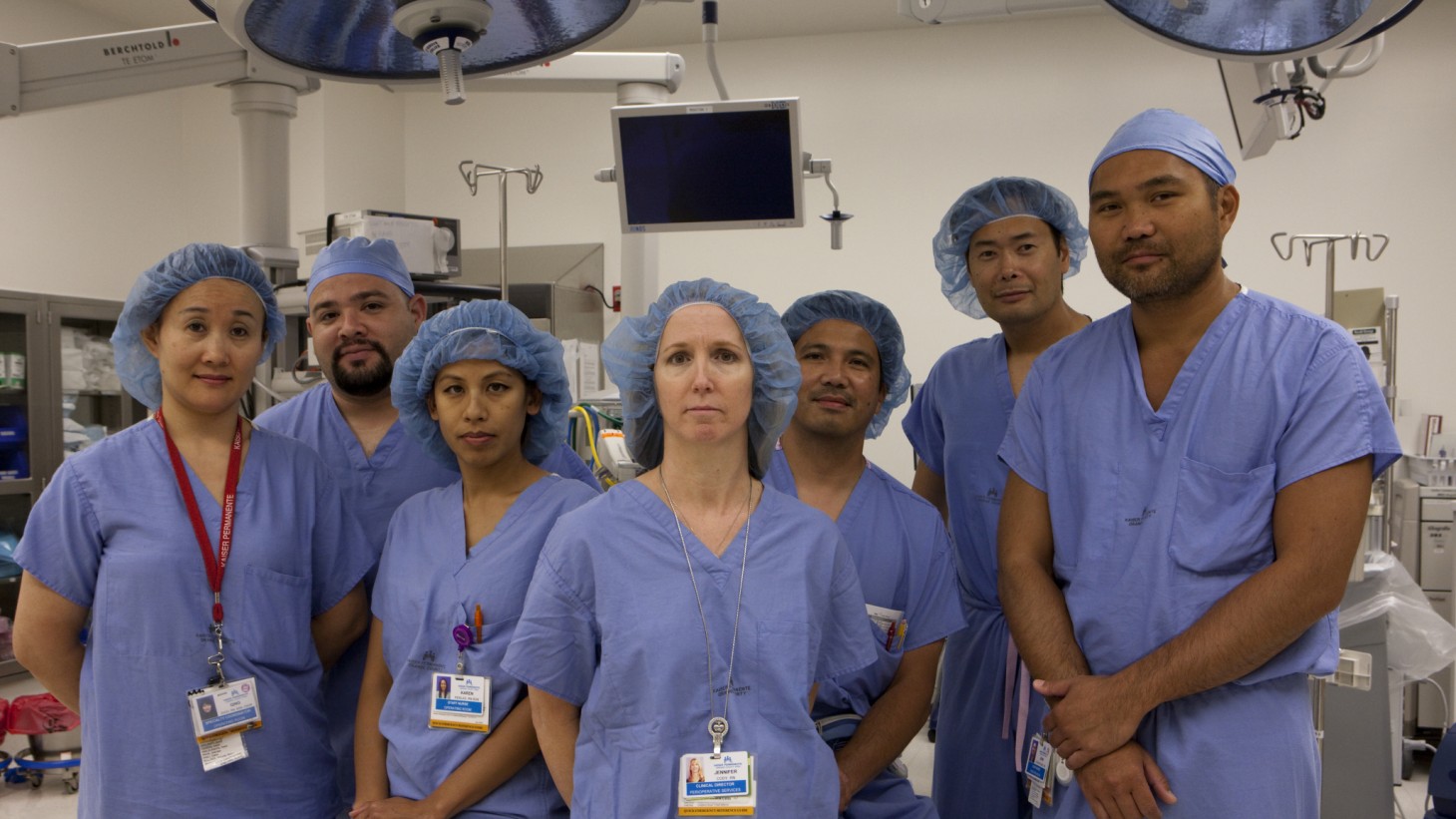
Business experts cite collaborative teams, such as this surgical team from Irvine Medical Center, as a model for collaborative enterprises.
Article highlights Irvine Medical Center's successful efforts to reduce surgery turnaround times
The July/August 2011 issue of the Harvard Business Review highlights Kaiser Permanente’s as a model collaborative community that fosters innovation, agility and efficiency. In the issue’s lead article, "Building a Collaborative Enterprise," the authors make the case that KP is among the leading organizations that are reaping rewards from operating as collective communities that "encourage people to continually apply their unique talents to group projects — and to become motivated by a collective mission."
The authors of "Building a Collaborative Enterprise" identify four organizational efforts that are keys to developing a collaborative community:
- Defining and building a shared purpose
- Cultivating an ethic of contribution
- Developing processes that enable people to work together in flexible but disciplined projects
- Creating an infrastructure in which collaboration is valued and rewarded
A shared purose
The authors use the KP Value Compass to illustrate their point about the importance of defining and building a shared purpose. The Value Compass features the patient/member at the center of the compass with four surrounding points: best quality, best service, most affordable and best place to work. It is included in the 2010 national agreement between KP and the 29 local unions that make up the Coalition of Kaiser Permanente Unions and informs work at every level of the organization. As the authors explain, the Value Compass "guides efforts at all levels of Kaiser: from top management’s business strategy, to joint planning by the company's unique labor-management partnership, right down to unit based teams' work on process improvement.
"We must recognize that old ways of doing things will not work in the new world of health care or business in general," says John August, executive director of the Coalition of Kaiser Permanente Unions. "At the KP Labor Management Partnership, we have devoted ourselves to transform our relationships throughout the organization, to collaborate and to learn in the interest of service to our patients, members and our communities. We are on the right path, and it’s fantastic that the Harvard Business Review has recognized our success."
Improving quality, reducing costs
The article also recognizes the accomplishments of a team at KP’s Irvine Medical Center that applied a collaborative approach — dubbed the Total Joint Dance — to reduce the turnaround time between total joint replacement surgeries. By involving nurses, surgeons, technicians and other employees in coming up with solutions, the team was able to devise changes that reduced the average turnaround time between procedures from 45 to 20 minutes, freeing up 188 hours of operating-room time a year at an average annual savings of $132,000 per OR.
The practices have since been adopted by general surgery, along with head and neck, urology, vascular and other specialties at Irvine, the article notes, and the approach has spread to other KP hospitals.
Collaboration as strategy
"This is a great example of how we’ve been able to use a collaborative approach to harness the knowledge of frontline employees, and then spread the effective practices that we develop with that knowledge," says Barb Grimm, senior vice president of the Office of Labor Management Partnership.
The authors conclude that the organizations that will become the household names of the future will be those with a strong collaborative culture. "Few would argue that today’s market imperative — to innovate fast enough to keep up with the competition and with customer needs while simultaneously improving cost and efficiency — can be met without the active engagement of employees in different functions and at multiple levels of responsibility. To undertake that endeavor, businesses need a lot more than minimal cooperation and mere compliance. They need everyone’s ideas on how to do things better and more cheaply. They need true collaboration."
This story was originally published on InsideKP
